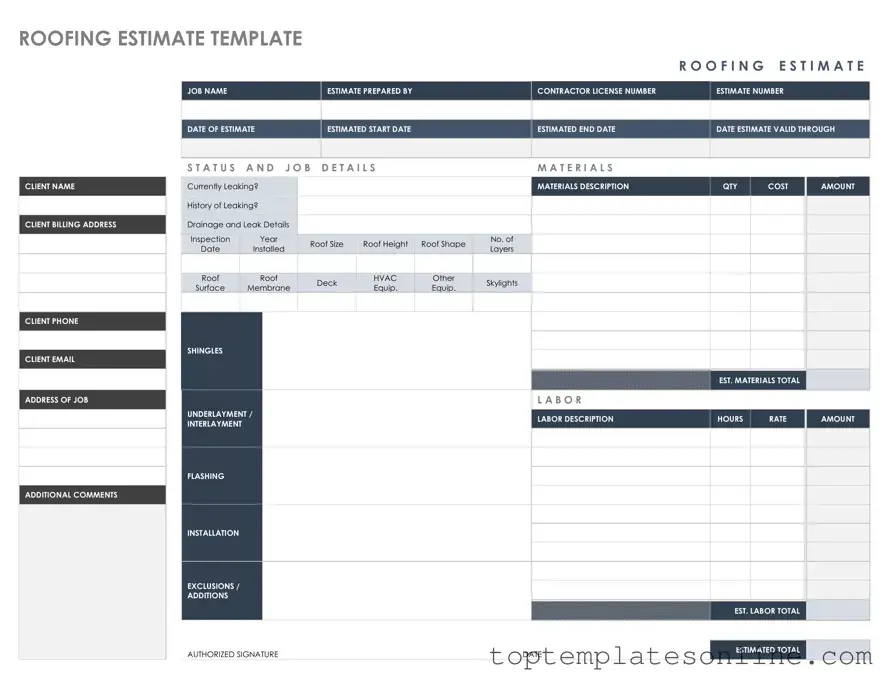Fillable Roofing Estimate Form
The Roofing Estimate form is a document used to outline the costs and details associated with a roofing project. This form helps homeowners understand the scope of work, materials needed, and the overall pricing. By providing clear information, it enables informed decision-making for those considering roofing repairs or replacements.
Customize Roofing Estimate Here
